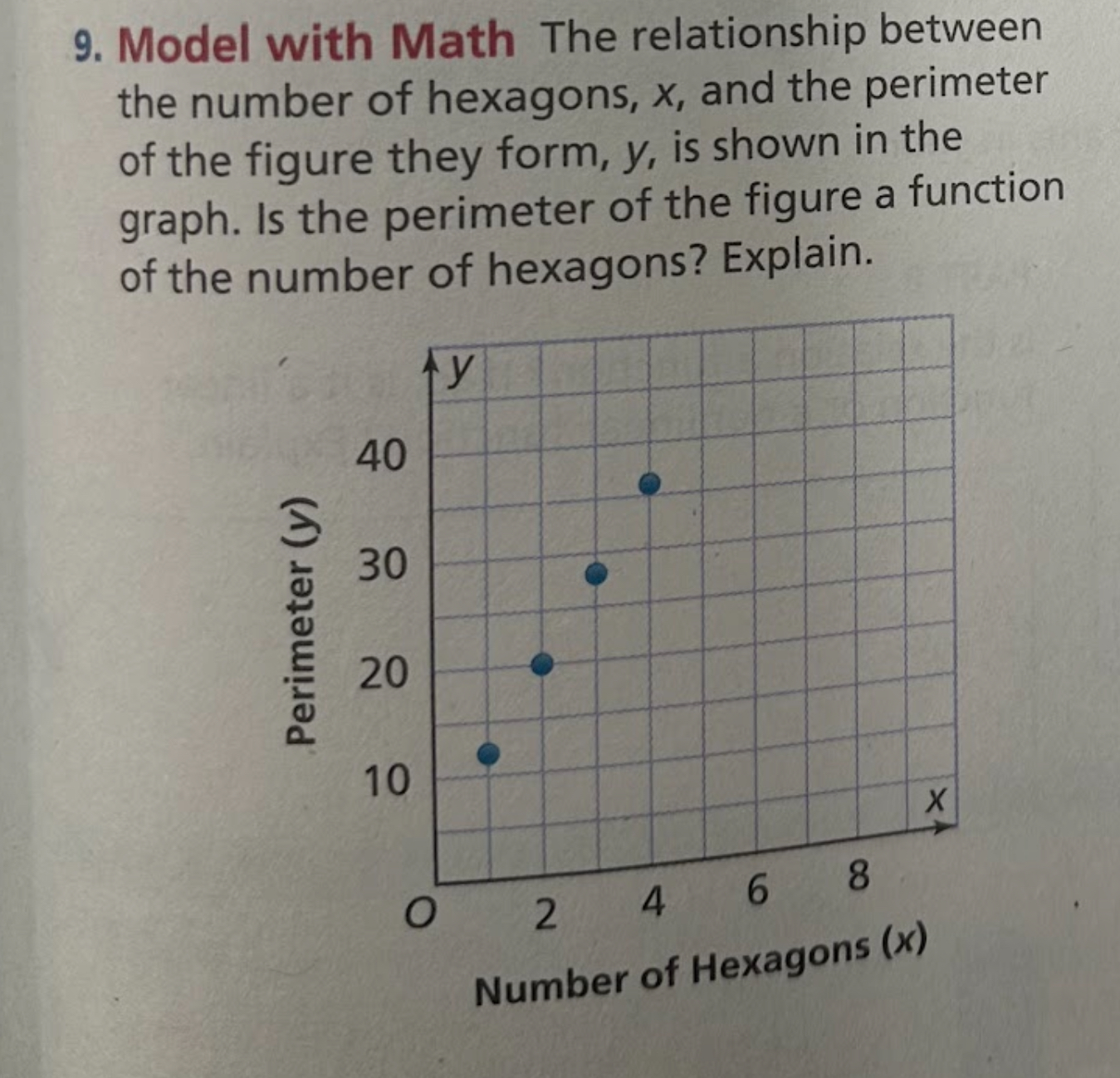Is the perimeter of the figure a function of the number of hexagons? Explain.

Understand the Problem
The question is asking whether the perimeter of a figure, indicated by the variable 'y', is a function of the number of hexagons 'x', based on the provided graph. To answer this, we will analyze the relationship shown in the graph and explain if 'y' depends on 'x' following the definition of a function.
Answer
Yes, the perimeter $y$ is a function of the number of hexagons $x$.
Answer for screen readers
Yes, the perimeter $y$ is a function of the number of hexagons $x$.
Steps to Solve
- Analyze the relationship between variables
Look at the graph, where the x-axis represents the number of hexagons ($x$) and the y-axis represents the perimeter ($y$). Observe how $y$ changes as $x$ increases.
- Identify the behavior of the points
From the graph, we can see that as $x$ increases, $y$ also tends to increase. This indicates a relationship where one variable affects the other.
- Check for multiple outputs
For a relationship to be a function, each input ($x$ value) must correspond to exactly one output ($y$ value). In the graph, there are distinct points for each integer value of $x$ (0 through 6), meaning there is only one value of $y$ for each $x$.
- Conclusion about the function
Since each $x$ value corresponds to a unique $y$ value in the graph, we can conclude that the perimeter $y$ is indeed a function of the number of hexagons $x$.
Yes, the perimeter $y$ is a function of the number of hexagons $x$.
More Information
A function is defined as a relationship where each input corresponds to exactly one output. In this case, the number of hexagons directly influences the perimeter of the figure they form.
Tips
- Confusing correlation with causation. Just because two variables change together doesn't mean one causes the other.
- Overlooking instances where an $x$ value can correspond to multiple $y$ values; ensure each input matches only one output.
AI-generated content may contain errors. Please verify critical information